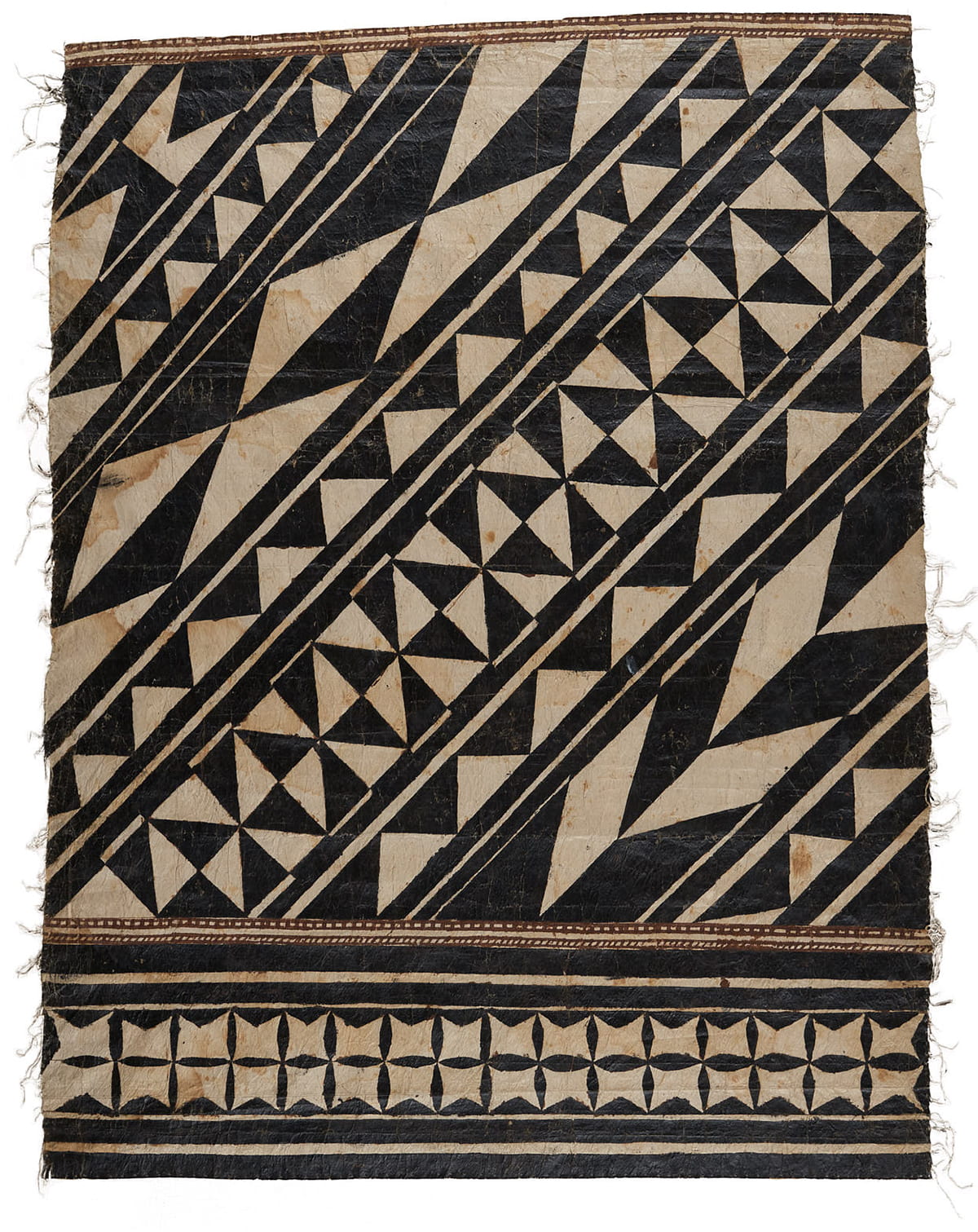Located 1,300 miles north of New Zealand in the South Pacific Ocean, Fiji is made up of hundreds of islands and islets with tropical forests, rugged mountains and white beaches lined with coconut palms. The archipelago is also thick with paper mulberry plants, which Fijians use to craft their traditional cloth: “masi.”
Known by many names throughout the Pacific, bark cloth probably originated in subtropical areas of mainland Asia. Masi, as it is known in Fiji, was originally made from the bark of the dye fig plant until paper mulberries from Southeast Asia were found to be superior.
The backbreaking production of masi is done by women. Women pierce the outer bark of the plant stalk with their teeth and then painstakingly strip it away and remove the inner bark. They soak the inner strips in water, beat them with a wooden mallet to stretch the fibers, and then dry the cloth in the sun. Individual strips can be overlapped and beaten to make larger pieces.
This panel from the Cotsen Textile Collection is a particularly beautiful example of the art form. Fijians are masters of bold geometric patterning using a limited range of pigments. This panel was likely stenciled using mangrove sap and a specially prepared soot.
Barkcloth was originally made into clothing but later became a medium for ceremonial objects. Masi textiles were used to wrap newborns or cover the casket of a beloved relative. They also would have been given as wedding gifts or offered to a visiting dignitary as a sign of goodwill.

